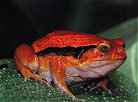Moreover, it is assumed that students taking the class have
basic programming skills (undergraduate
level skills
are sufficient). One course project will require significant
programming efforts;
however, students are allowed to choose a programming language
of their own liking to conduct the project.
Mango: Shi, Wang, Wu, Xu
Grades Fall 2001
Assignment Scores
Exam Scores
Textbook Coverage
One goal of this class is to give you a very up-to-date introduction
to AI.
To my best knowledge chapters 1, 3, 4, 5, 7, 9, 10, 14, 15, 18, 19
and 27 of the Russel textbook will be covered indepth. Chapters
6, 8, 11, 16 will be partially covered by COSC 6368. If there is
enough time left at the end of the semester, chapter 23 will be
also
covered. Additionally, a few journal articles and transparencies of the
instructor will be used as teaching material. Moreover,
frequently, examples will be discussed in the lectures that are not
contained in the listed teaching material.
Grading
The course will have a midterm exam (scheduled
for Tu., October 23) and a final
exam (scheduled for Th., Dec. 13), one programming
project, and 4 assignments that contain
paper&pencil-style questions or
solve particular problems using AI-tools, and one group
activity. Each student has to
have a weighted average of 74.0 or higher in the
exams of the course in order to receive a grade of "B-" or better
for the course.
Students will be responsible for material covered in the
lectures and assigned in the readings. All homeworks and
project reports are due at the date specified.
No late submissions
will be accepted after
the due date. This policy will be strictly enforced.
Course grades will be based on 36% final exam, 30% midterm
exam, 34% will be allocated for non-exam activities.
Translation number to letter grades:
A:100-90 A-:90-86 B+:86-82 B:82-78 B-:78-74 C+:74-70
C: 70-66 C-:66-62 D+:62-58 D:58-54 D-:54-50 F: 50-0
Only machine written solutions to homeworks and assignments
are accepted (the only exception to this point are figures and complex formulas) in the assignments. Be aware of the fact that our
only source of information is what you have turned in. If we are not capable to understand your
solution, you will receive a low score.
Moreover, students should not throw away returned assignments or tests.
Students may discuss course material and homeworks, but must take special
care to discern the difference between collaborating in order to increase
understanding of course materials and collaborating on the homework /
course project
itself. We encourage students to help each other understand course
material to clarify the meaning of homework problems or to discuss
problem-solving strategies, but it is not permissible for one
student to help or be helped by another student in working through
homework problems and in the course project. If, in discussing course materials and problems,
students believe that their like-mindedness from such discussions could be
construed as collaboration on their assignments, students must cite each
other, briefly explaining the extent of their collaboration. Any
assistance that is not given proper citation may be considered a violation
of the Honor Code, and might result in obtaining a grade of F
in the course, and in further prosecution.
Course Exams
Midterm
The midterm will be given on
Tuesday, October 23, 2001 during
the regular class hours. Here is the
Review List for the Midterm Exam. The
exam will be "open textbooks".
Results Midterm Exam (preliminary!!!)
Translation from test points to number grades
Review Sheet for 2001 Midterm Exam
Final Exam
The final will be held Dec. 13, 2001 11a.
Review Sheet for
the 2001 COSC 6368 Final Exam (new!!!)
COSC 6368 Final Exam Fall 1999 (in Word)
Part 2 of Fall 1999 Qualifying Exam (in html)
AI Qualifying Exam
The AI Qualifying Exam will consist of two parts:
part1 with be the final exam of COSC 6368. Part2 will
be an extra exam that will be given on Friday, December 14, 2001 (time TBDL)
Part2 of the qualifying exam will cover the following areas:
- Heuristic Search and Game Playing (chapters 3-5, focusing on
material covered in the lectures)
- Machine Learning (focusing on material that
was discussed in the lectures of COSC 6368)
- Chapter 16 of the Russel book
- Chapter 20 of the Russel book
Part2 will take approx. 70 minutes; Part1 of the qualifying exam has
a weight of 65% and Part2 has a weight of 35%. Both exams are
open textbook and notes!
Communication with the teaching staff
We strongly encourage students to come to my office hours or
to talk to me directly after class.
If a homework clarification is posted after a student has completed an
assignment, the student should contact us as soon as possible to check if
the assumptions s/he made are going to be accepted.
Please do not e-mail us with grading questions. If you want
us/me to
explain why I took points off, you can talk to me/us
during office hours and directly after class.
Material COSC 6368 Fall 1999
Midterm Exam Fall 1999
Problems Homework3+4 (RETE Problem
corrected on Nov. 16, 9a, and problem 16 updated on Nov. 19)
C5.0 Tutorial
(C5.0 is a decision tree machine learning and knowledge discovery
tool --- probably, the most famuous one of the decision tree family)
Stanford
Page with Additional Course Material
Discussions of Homework Problems
own-red-car-rich-problem:
VpVc (owns(p,c) ^ red(c) ^ car(c) -> rich(p))
versus
Vp]c (owns(p,c) ^ red(c) ^ car(c) -> rich(p))
last updated: December 15, 12:22p

And finally: Frogland --- all about frogs












 Last News COSC 6368 (12/19/01)
Last News COSC 6368 (12/19/01)

